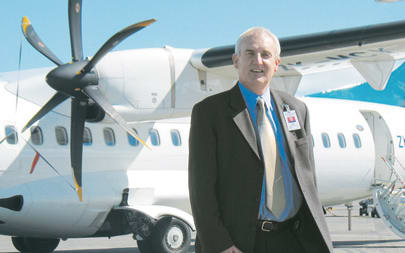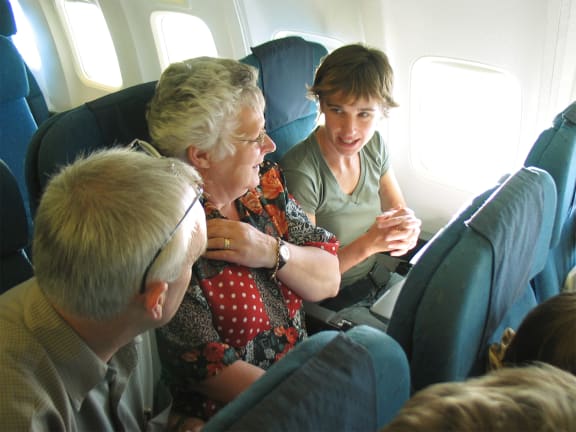This Way Up for Saturday 28 November 2015
Fear of Flying
The average age that someone develops a fear of flying is 42 years, and 15 percent of us will experience it at some stage in our lives, according to Grant Amos.

Grant Amos, who works at flyok.co.nz, has been running courses to fight people's fear of flying for 30 years. Photo: Supplied
Mr Amos is a psychologist who has been running 'fear of flying' courses in New Zealand for the past 30 years.

Mr Amos, left, in the air Photo: Supplied
Statistically speaking, flying in an aeroplane is far safer than driving a car, crossing the road, or even eating out in a restaurant.
In 2013, there were 32 million air departures and 3 billion people flew on commercial aircraft but there were only 81 accidents and just 210 fatalities.
People have worked out that you'd have to fly every day for thousands of years before the statistics say you would crash.
So why do so many of us become scared and anxious about flying?
It's easy to see how anxieties about flying can start. Being 11,000 metres up in the air in an aluminium tube travelling at 900 kilometres per hour, flown by someone you don't know and can't see, can do that to you. Then there's turbulence, the queues for the toilets, the strange noises, and the way the wings seem to wobble sometimes.
This Way Up's Simon Morton joins a group of people hoping to overcome their fear of flying in a five-day course that culminates in a flight (spoiler: in atrocious weather).
Qatar World Cup

Qatar football team Photo: Flickr: Pic by Mohan

Robert Booth Photo: Supplied
The tiny Gulf state of Qatar is gearing up to host the 2022 FIFA World Cup. Robert Booth has recently been in Qatar and met the fans who are being paid to attend games and fill up the stands.
End of antibiotics? Next generation drugs to fight infections.

E coli Photo: Photo by Eric Erbe, digital colorization by Christopher Pooley, both of USDA, ARS, EMU
Last year the World Health Organisation warned that the world was heading towards a "...post-antibiotic era".
Meanwhile, a study published in The Lancet last week described the discovery in China of a bug resistant to the polymyxins, the last class of fully effective antibiotics. More worryingly, this resistance can pass between bacteria, raising the prospect that polymyxin-resistant bugs could spread worldwide over the next few years.
So far, so gloomy...but is antibiotic resistance a problem that we can solve?
Bacteria have been around for billions of years, and in that time they've worked out how to fight off and kill other bugs muscling in on their turf. They do this using a bacteriocin, a toxic protein that can target a specific species of bacteria; think sniper fire as opposed to the hand grenade approach employed today with broad spectrum antibiotics.
Professor Richard James of the University of Nottingham and other teams around the world are hoping that these bacteriocins will help us win the war against infection.
Menopause: Part 6 - HRT
We look at the different varieties of hormone replacement therapy or HRT available on the market with Dr Bev Lawton. She's Director of the Wellington Menopause Clinic, the director of the Women's Health Research Centre at the University of Otago, and a past president of the Australasian Menopause Society.